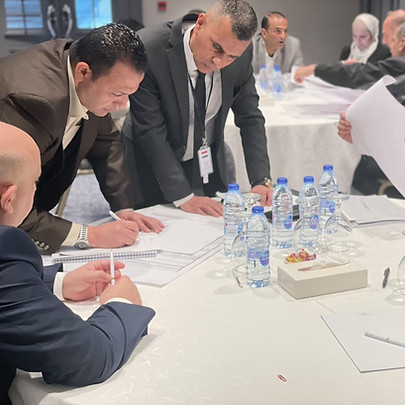
What we do
Coalescion mission services and activities fall under four key pillars
I
Research
&
aNALYSIS
II
engagement
III
Education
&
Training
IV
advocacy
Pillar activities and services are designed to be a feedback loop, each informing and reinforcing the others. We regularly adjust and evolve activities and services to stay current with evolving needs, conditions, and discoveries.
Research & Analysis
We investigate systems, behaviors, and environments to uncover patterns, inefficiencies, and opportunities for human-centered improvement.
-
Stakeholder Ecosystem Mapping & Analysis
Use case: A federal agency wants to understand how to better engage academia, industry, and civil society on emerging tech policy.
-
Governance & Capability Gap Assessments
Use case: A city government needs help evaluating its crisis communication and public engagement during climate-related emergencies.
-
Cross-sector Needs Analysis & Landscape Scans
Use case: A foundation wants to fund a collaborative initiative but needs a map of who’s already working in the space and where the gaps are.

5-day WMD – High Consequence Vessel Search and Crime Scene Investigation Workshop in Bangkok, Thailand.
Engagement
We build, strengthen, and facilitate trust-based, multi-stakeholder collaborations.
-
Strategic Convening & Facilitation
Use case: A multilateral body hires Coalescion to design and lead a multi-day stakeholder retreat to improve coordination on post-conflict reconstruction.
-
Engagement Strategy & Narrative Design
Use case: A UN agency wants to improve how it communicates and collaborates with skeptical local communities in a peacebuilding program.
-
Conflict Mitigation & Relationship Repair Design
Use case: A national NGO is experiencing breakdowns in trust between HQ and field offices and seeks help rebuilding alignment and morale.
Education & Training
We design tailored learning experiences that build capacity at the individual, institutional, and systems level.
-
Custom Workshop Development & Delivery
Use case: A corporate CSR team needs an interactive training series on stakeholder-centered problem-solving and trust-based negotiation.
-
Capacity Capture
Use case: A regional university network hires Coalescion to train faculty and administrators in inclusive curriculum design and community partnerships.
-
Human Systems Thinking & Complexity Navigation Courses
Use case: A development agency wants to help staff and grantees better adapt to uncertainty and social complexity in fragile environments.


Jordanian and Iraqi border and national security counterparts collaborate during a TTX on Explosives Precursor Tracking and Controls in Amman, 2023.

COVINTS, a core Coalescion partner, hosted a Counter-Terrorism Expo in New Delhi, India in 2023. Coalescion experts participated virtually and in person.
Advocacy
We help shape environments that enable better governance, cooperation, and human outcomes.
-
Policy Co-Creation Labs & Prototyping Facilitation
Use case: A State Department bureau invites Coalescion to co-design a collaborative export control framework with industry, academia, and allies.
-
Messaging & Communications Strategy for Shared Security
Use case: A civil society coalition seeks help reframing disarmament narratives to focus on collective dignity and local impacts.
-
Issue Briefs, White Papers, & Positioning Support
Use case: A coalition of mayors commissions a Coalescion-authored white paper advocating for city-led diplomacy on climate migration.
